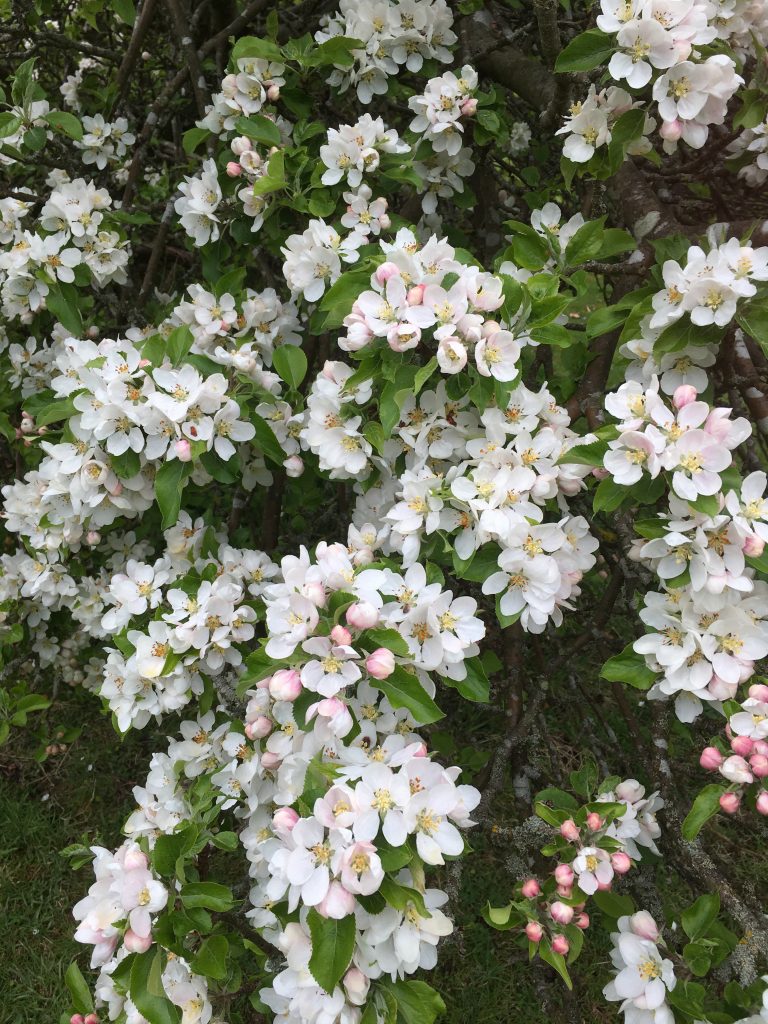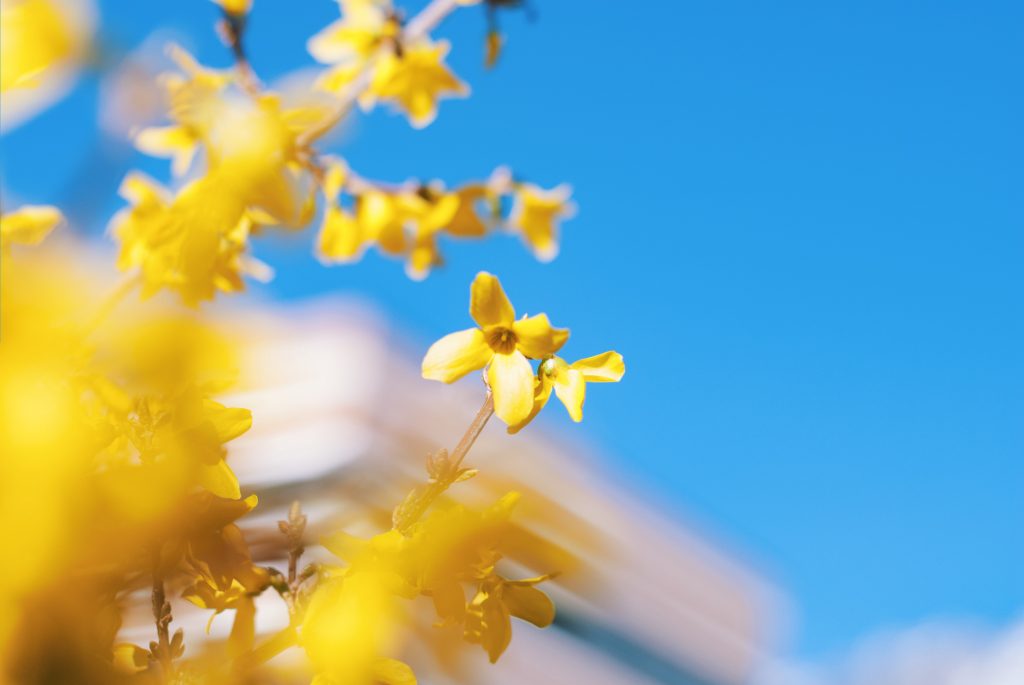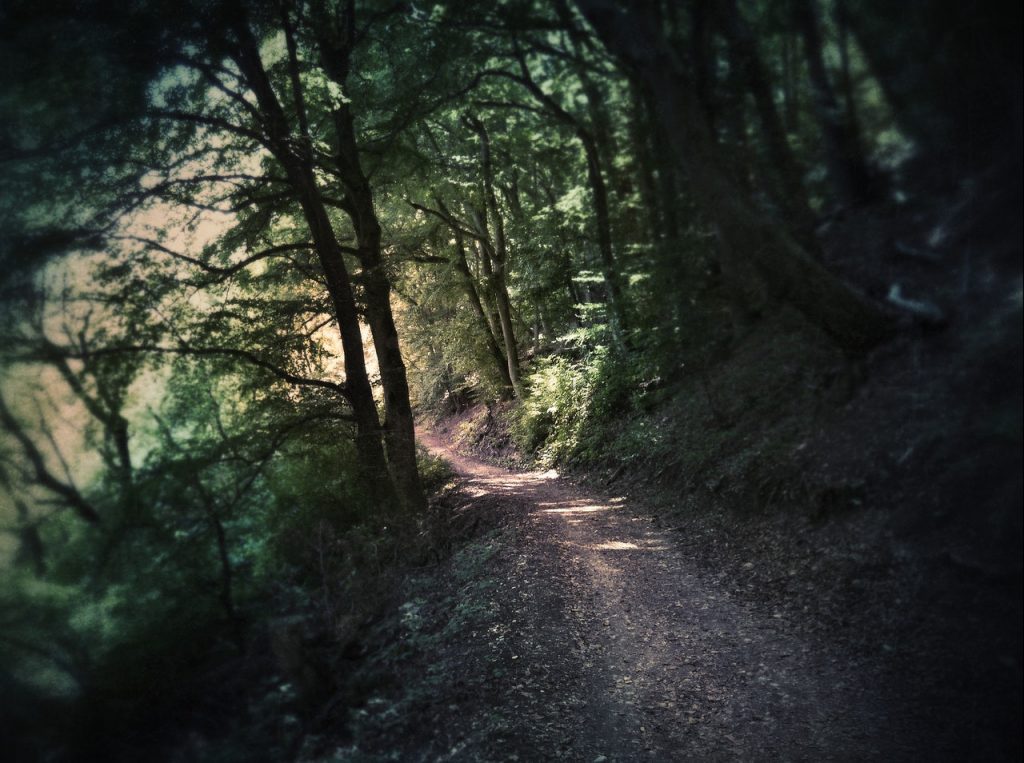Dharma Glimpse: Touching the Pure Land
by Chris Earle-Storey

I’ve been feeling a bit low in spirits for the past couple of weeks. I’ve done something to my knee – or perhaps I haven’t done anything in particular and maybe it’s just an age thing – and it’s been really sore and uncomfortable, which has meant I haven’t been able to get out walking as much as I’d like. So today, in order to lift my spirits, I’ve been sitting in the garden.
My garden is one of my very favourite places to be. The lawn is more moss and weeds than grass. My green fingers are a very pale shade of green and a few of the plants I put in the border last year have unfortunately not survived, but to me the garden is wonderful and my private sanctuary. Let me paint you a picture. The garden is dominated by two beautiful trees: a majestic weeping willow and a beautiful old apple tree that provides us with a huge crop of apples every year without fail. The blossom on the apple tree is opening up nicely and the late afternoon air is heavy with its sweet fragrance. Bees buzz busily amongst the branches. Our visiting blackbird sits in the willow, singing its complex and beautiful song, a voice so sweet it makes the heart sing too. Timothy the cat lazes at my feet on the patio, occasionally stirring himself sufficiently to swipe at a dried leaf as it tumbles past in the breeze; his friend Sam, always such a happy soul, sits amongst the border plants and purrs contentedly to himself. Some of the plants in the border are starting to open up their flowers and I see spots of white, pink, orange and purple in the fresh green foliage.
Whilst I’ve been laid up with my poorly knee, I’ve been re-reading the Smaller Pureland Sutra and enjoying the rich, sumptuous descriptions of the Pure Land, full of gorgeous sights, sounds and aromas to delight the senses and calm the spirit. Many people think of the Pure Land, or Sukhavati, as a place we go to after death. As I sit here in my garden, I can’t help thinking that it would be such a pity to be so focussed on the Pure Land (or God’s Kingdom, or Heaven, or whatever else you may wish to call it) as something we reach only after death, and thereby miss the opportunity to discover Sukhavati in our life now. For me, here in my own small paradise of a garden, I know I can touch the Pure Land every day in the beauty and peace of this blessed place.
Namo Amida Bu.


